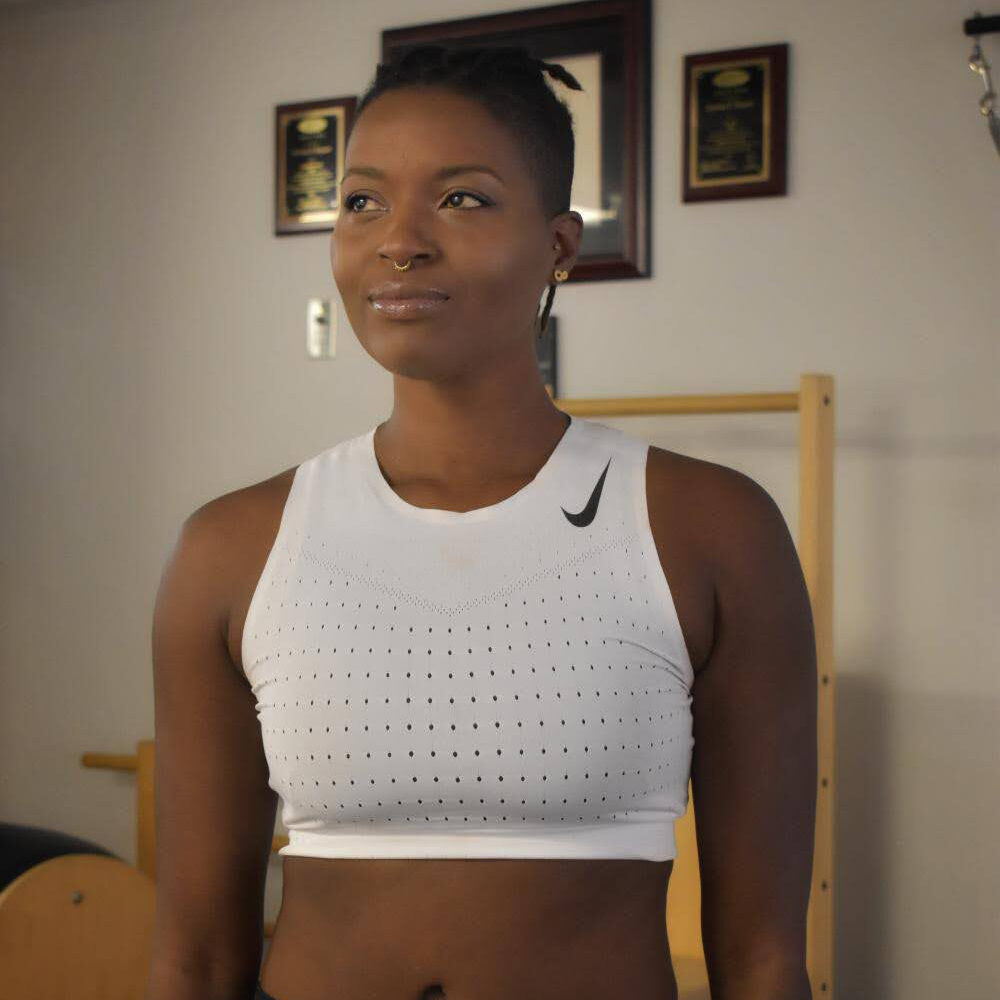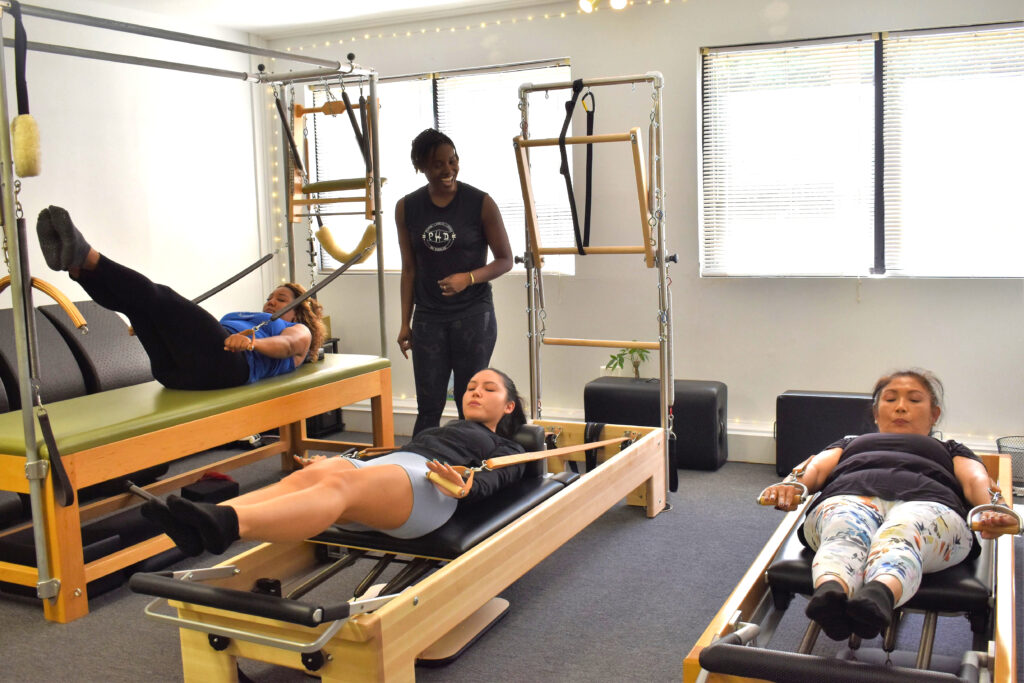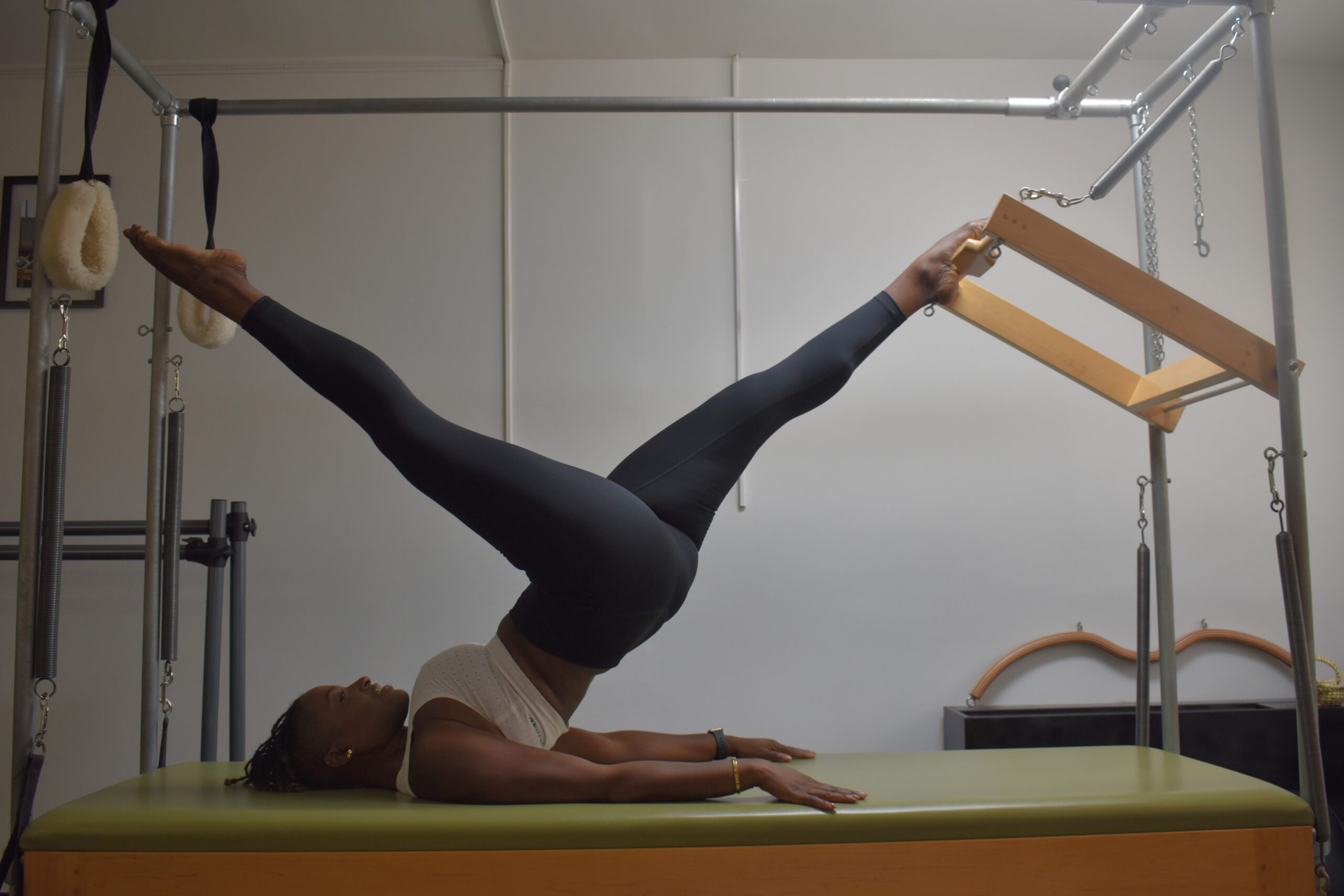Why Dancers Make Great Pilates and Gyrotonic Instructors
Dancers’ investment in improvement over time is unparalleled: Each class is an opportunity to hone and refine. This commitment to growth and progress, along with a keen bodily awareness and attention to detail, is why dancers also excel as Pilates and Gyrotonic teachers. “I’ve always had a love for movement and body mechanics,” says Everlea Bryant, a professional dancer and Pilates instructor, as well as the creator of a Pilates certification program and studio director. “When I’m looking at the patterns in someone’s body, I use my dance experiences––and dancer’s vision––to understand how this person is moving and how the tools of Pilates can create better alignment.”
Moving With Precision
Dancers tend to demonstrate Pilates exercises exceptionally well as a result of their training, conditioning, and awareness of the details of movement. Bryant has found the deep knowledge of the body and of movement patterns she developed as a dancer to be indispensable in teaching Pilates. “I had decades of memorizing choreography, both for performances and during classes,” she says. “Classical Pilates has more than 530 exercises. Trying to memorize 530 random facts would be overwhelming, but placing them in a choreographic sequence makes them accessible.”
Similarly, dancers have experience with the body getting progressively warmer and stronger as they move through a dance class. “The same thing happens in a Pilates class,” says Bryant. “You start with relatively simple exercises and build toward more difficult and complex movement.”
Founded by Joseph Pilates during World War I to help rehabilitate injured and sick prisoners of war, Pilates draws upon principles of physical therapy, yoga, and gymnastics to create a holistic approach to exercise and movement. Bryant credits Pilates for extending her own career as a dancer. “I was a very hypermobile dancer and had a lot of chronic dislocations,” she says. “Pilates helped to stabilize my body tremendously.”

Teaching also offers a way for dancers to work in a field that’s more directly related to their passion for movement. “You can earn money with a job that actually informs your dancing,” says Bryant, explaining that many of her dance colleagues had second jobs in restaurants or retail. “Teaching Pilates gives you the opportunity to speak health into your body while also helping somebody else move better. It gives you a career that is directly related to health, wellness, and movement.”
Spiraling Strength
Karen Safrit can draw a direct line from her own dance training and teaching to her success as a Gyrotonic teacher. A competitive figure skater as a child, Safrit later danced professionally with Nikolais and Murray Louis Dance. She decided to get certified to teach Gyrotonic more than a decade ago as an asset to teaching in university dance programs. Instantly it clicked: “Dancers generally are not aware of how they achieve the strength in their movement, as it’s not often talked about in ballet or modern classes,” says Safrit. “The Gyrotonic Expansion System focuses on making the whole body stronger and giving people the ability to identify what they can do to achieve that strength and balance.”
The Gyrotonic Expansion System was created by Juliu Horvath, a former principal dancer with the Romanian National Ballet Company, who defected from Romania, settled in the U.S., and was a principal dancer with Houston Ballet. After a ruptured Achilles tendon ended his performing career, he moved to New York City and developed the Gyrotonic and Gyrokinesis exercises. For Safrit, who had also studied Pilates while getting an MFA in dance at New York University, Gyrotonic exercises are “more three-dimensional, with more spirals in all the extremities.”
Safrit has found that teaching fits well into many dancers’ schedules. “Most dancers are working at night if they’re performing, or taking classes at night if their city doesn’t have open classes during the day. A lot of the people who are practicing Gyrotonic are looking for sessions during the daytime.”
Teaching also taps into a skill many dancers possess: focus. “I remember when I was dancing professionally and class was the place where all the worries of the day disappeared and my only concern was dancing,” says Safrit. “My clients today describe a similar pleasure with Gyrotonic: You have to concentrate on each movement, and this mindfulness gives people an hour of focus that’s often missing in busy lives that are full of distractions and screens. They separate the pressures of life outside the studio from an hour of moving within the studio. Dancers understand that joy.”

Teaching Certifications
Teaching Gyrotonic, which is trademarked, requires becoming a certified trainer. Gyrotonic certification includes a pre-training course, the foundation course, an apprenticeship, and a final certificate/assessment, with a cost of just under $5,000. Continuing education credits are required every two years, costing between $400 and $1,000, and instructors are also required to have their own liability insurance (approximately $160 annually). Gyrotonic teachers typically charge clients between $100 and $175 for an hour-long private session.
“Pilates is legally considered a generic term, which means anyone can open a Pilates studio and start training teachers,” explains Everlea Bryant, who strongly recommends dancers get certified before teaching. She recommends looking for a well-established program with instructors who have significant experience in teacher training. While Bryant acknowledges getting certified can be expensive, with “some programs costing upwards of $10,000 for comprehensive training,” she notes that most teachers will earn many multiples of the cost of training.
There are ways to reduce and/or spread out costs: Bryant directs a studio that offers work–study positions and internships. “People can pay for their training while earning an income,” she says.




